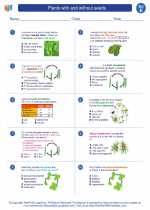Chromosphere
The chromosphere is a layer of the sun's atmosphere located above the photosphere and below the solar transition region. It is characterized by its reddish color, hence the name "chromosphere," which means "sphere of color". The temperature of the chromosphere ranges from about 4,500°C at the bottom to 25,000°C at the top. This layer is best observed during a total solar eclipse when the photosphere is blocked out, revealing the reddish glow of the chromosphere.
The chromosphere plays a key role in the sun's atmosphere and is involved in several important solar phenomena, including solar flares and prominences. It is also the region where solar spicules, which are dynamic jets of gas, are observed. The chromosphere's dynamics and energy transfer processes are areas of active research in solar physics.
Study Guide for the Chromosphere:
- What is the chromosphere?
- What is the temperature range of the chromosphere?
- How is the chromosphere best observed?
- What are some important solar phenomena associated with the chromosphere?
- Why is the chromosphere an area of active research in solar physics?
The chromosphere is a layer of the sun's atmosphere located above the photosphere and below the solar transition region.
The temperature of the chromosphere ranges from about 4,500°C at the bottom to 25,000°C at the top.
The chromosphere is best observed during a total solar eclipse when the photosphere is blocked out, revealing the reddish glow of the chromosphere.
The chromosphere is involved in solar flares, prominences, and the formation of solar spicules.
The dynamics and energy transfer processes in the chromosphere are areas of active research in solar physics due to their significance in understanding solar activity and the sun's influence on space weather.
[Chromosphere] Related Worksheets and Study Guides:
.◂Science Worksheets and Study Guides Fifth Grade. Plants with and without seeds

 Worksheet/Answer key
Worksheet/Answer key
 Worksheet/Answer key
Worksheet/Answer key
 Worksheet/Answer key
Worksheet/Answer key
 Vocabulary/Answer key
Vocabulary/Answer key
 Vocabulary/Answer key
Vocabulary/Answer key
